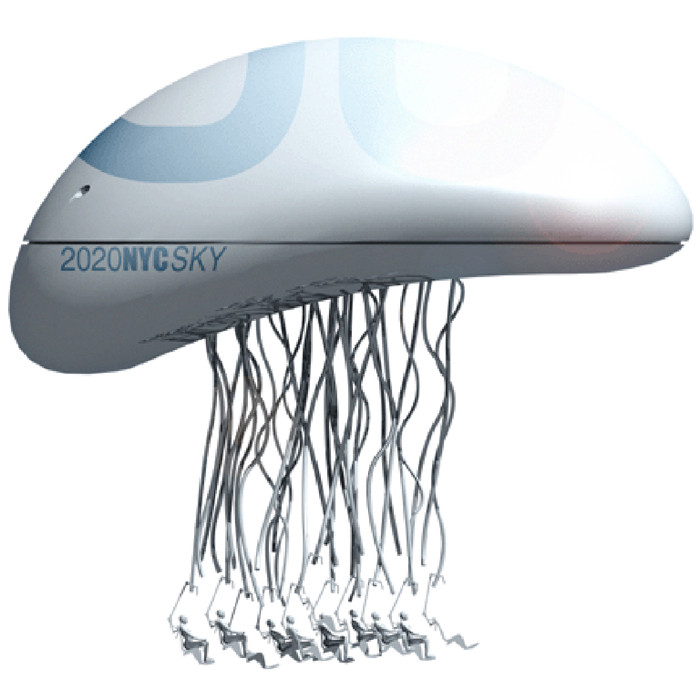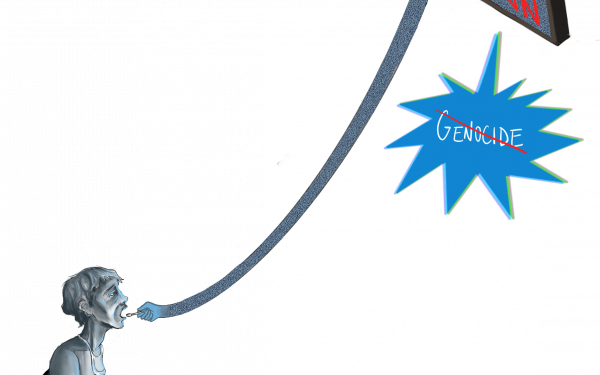FEAST on Creativity
Leaders of Social Media Talk Cities and Sharing
NEW YORK, NY—Sitting in the main auditorium of The New York Times building, the world’s movers of social media spoke about the future of the global economy, society and cities at the FEAST conference on Oct. 15.
While most of the speakers articulated a future where social media and new networks of sharing would conquer the drudgery of work, they also ignored the large segment of America’s population without access to the tools of social media.
The families eating breakfast at McDonald’s at the corner of 125th Street and Park Avenue were largely ignored, as were the panhandlers in the subway, but one speaker took larger problems head on.
Mitch Joachim, the cofounder of ecological planning studio Terreform One and a professor at New York University, spoke about changing the world on a large scale.
Faced with three scenarios for the world’s urban places, Joachim told the 400 people in attendance that he refused to concede that environmental degradation was irreversible.
“If I said that, half of us will do good things and the other half will buy big cars, use tons of energy and speed around the block living life to its fullest before they die,” said Joachim.
His goal instead is to build new cities that are livable and sustainable.
“This is nothing new […] in the past they invented entire cities from scratch all at once, with dirigibles connecting to skyscrapers, skyscrapers linking in clusters with one and another, and with cannonade systems for mobility,” said the planner.
“We look at cities from the same perspective; we design everything, from the blimps, to the cars, to the buildings.”
Showing the audience a mockup of his green city, Joachim had a noticeable reaction to the futuristic cityscape dominated by glass ziggurats, blimp transit propelled by its riders and small cars whizzing through the verdant urban canyons.
“I know this doesn’t seem like how you would build a green city,” said Joachim. “You have to measure this in a scale of fabulousness, it has to be something that you can live in. Something you can see yourself in.”
The central piece of Joachim’s presentation was his proposal for a new urban car.
“It’s a wheel, the entire car is in that wheel. Drive train, suspension and a modicum of intelligence is in that wheel,” said Joachim of the wheel that was built by MIT students. “You add three or four of these wheels together and you get a car.”
Calling it the Bit Car, Joachim spoke of the vehicle as a utility service like water. All of them would be the same, but each driver could personalize the car’s soft exterior. The cars would be parked in stacks where they would be recharged by solar cells.
Built of soy-based plastics, the cars would travel in flocks and would require minimal driver intervention.
“We want a car that is at least as smart as a horse,” said Joachim.
The futurist was soon replaced by Rachel Botsman, the author of What’s Mine is Yours, a book about sharing as a replacement for consumption.
As an example of her work, Botsman cited FarmVille, a popular Facebook application.
“One per cent of the world’s population spends 78 years every month growing virtual food no one can eat,” said Botsman.
With millions of people interested in growing food and millions of acres of lawns and yards going unused, a website called Landshare has linked millions of growers to people with land to share.
“Technology is taking us back to old market behaviours,” said Botsman. “We are swapping, trading and bartering with technology like Facebook.”
Montreal has an example of this kind of collaboration with its Bixi bike share network, where people use cycling as a utility that they can rent.
Simply put, collaborative consumption wants to do the same thing to your drill, food, clothing, car, apartment and all the stuff you rarely need or use.
If the speakers at FEAST have a say about the future of the world, as it seems they might, get ready for greener cities and a lot more sharing.
This article originally appeared in Volume 31, Issue 10, published October 19, 2010.



_600_832_s.png)




